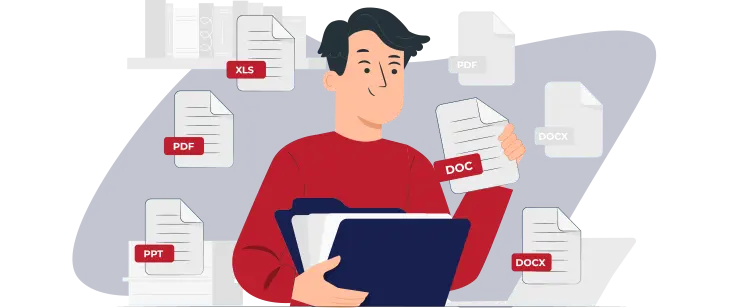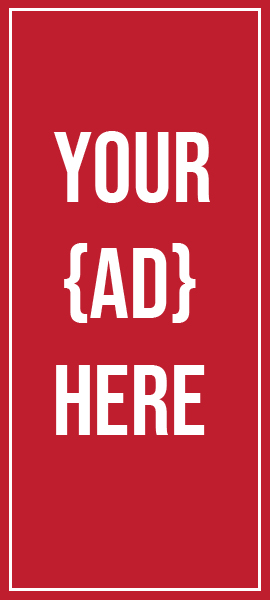
Framing the Document
No tears in the writer, no tears in the reader. No surprise in the writer, no surprise in the reader.
– Robert Frost
Introduction
This lesson presents a constructive way of starting to write by ‘framing’ your document, that is writing the beginning and ending first. You will learn techniques for writing effective titles, and for drafting two key slots of the Basic Information Frame.
Frame the document first
Sometimes, getting started on writing can be difficult. The technique of ‘Framing the Document’ gives you a positive way to start working on your draft. Framing is like building a box around your document to hold it in place.
Positioning your document points you in the direction you wish to go. Framing your document is the first stage of your journey.
The ‘points’ on the diamond
The beginning and end of your document are its cutting edges. These are your title, your MAIN MESSAGE, and your OUTCOME. These are the sections that the reader will look at first. For some documents, they may be the ONLY sections that the reader looks at!
If you can get these right, then you have started to give shape to your whole document. It is easier, then, to fill in the pieces in the middle.
By ‘Framing’ we mean:
Write your title, your MAIN MESSAGE, and your OUTCOME first
The other pages in this section will present some techniques for writing these sections effectively.
Titles that get attention
The subject line of a memo or letter, as well as the title of a report, provides the reader with a framework for understanding the document. These lines summarise the matter at hand and call attention to the solution that you propose. The reader’s attention will initially be drawn to the title of your document.
Action-oriented titles
Here are some draft titles, with improved versions.
| Draft | Improvement |
| Inventory Control System – PC package | Selection of a new Inventory Control System |
| Blocked floor drain on the 1/F Terrace, Administrative Building | Arrangements for clearing the blocked floor drain on the 1/F Terrace, Administrative Building |
| No Smoking Policy | Implementation of a No Smoking Policy |
| Mobile telephone fees | Authorization of the new payment system for mobile telephone fees |
| Employee Shuttle Mini-bus Operation | Review of the Employee Shuttle Mini-bus Operation |
Notice how the draft titles identify the topic but do not say anything about that topic. They do not identify any action in relation to that topic.
An attention-getting title refers to the solution of a problem. It signals the SOLUTION that you are proposing. It, therefore, refers to an action rather than a topic.
Too long?
Keep your titles as short as possible, but do not sacrifice clarity to conciseness. This title may be long:
The New Territories Northwest Branch Redevelopment Project Progress Report
but it would be hard to cut it down without losing essential detail. Separating the title into two may help in this instance, for example:
The Kowloon Northwest Branch Redevelopment Project
Progress Report
Brief check
The Basic Information Frame is –
- he MAIN MESSAGE in the form of summaries or aims
- the OUTCOME in the form of action requests, recommendations or predictions about the future.
Writing your MAIN MESSAGE
The MAIN MESSAGE can take one of two forms:
- a summary sentence or paragraph
- an aims section
Summary vs Introduction
A summary is quite different from an introduction.
An introduction provides background information about the case under discussion or about the document. It does not contain the important main points of the document, only preliminary information to allow the reader to appreciate these points later.
Here’s an example of an introduction, or background statement, used (rather weakly) as an opening sentence:
I refer to your memo dated 5 May 1997 and the subsequent discussion of our Mr. Ho and your Mr. Ip on 8 May 1997 regarding the captioned.
You will see that it says nothing substantive about the case.
Compare this with the summary at the start of the Clock report:
The external clock on the Administrative Building needs replacing. Granada Equipment and Supplies Ltd. are able to install a mechanical replacement for HK$133,000.
This presents the two main points of the report.
Writing a summary sentence or paragraph
A summary, then, contains the main points of the document presented in a concise, simplified form.
In fact, the summary is just like a mini-report. It commonly, therefore, has just the same information structure as the whole report, with some variations on:
PROBLEM – SOLUTION – EVALUATION – OUTCOME
Brief check
In a short, informal document the MAIN MESSAGE may consist of a single opening summary sentence or paragraph. In a more formal document, this may be marked off with a suitable heading, e.g., Summary, Executive Summary, or Management Summary.
Examples of summaries
Example 1
- SOLUTIONWe have investigated three possible PC packages as replacements for the
- PROBLEMcurrent labour-intensive manual inventory system. TrakPak appears the
- EVALUATIONmost suitable to our needs, and is within the budgeted costs.
Example 2
- We have completed the evaluation of PointView Pro 3.02 and find that itSOLUTION
- cannot meet the requirements for improved performance. We thereforeEVALUATION
- recommend that PointView Pro 2.7 should not be upgraded to version 3.02.OUTCOME
Example 3
- SOLUTIONDue to recent changes in budget policy, budget holders will in future be responsible for authorising payment of the basic plan fee for mobile
- OUTCOMEtelephone lines subscribed to by their cost centre. We now need your signature authorising such payments by standing instruction.
Writing aims
Unlike a summary, which focuses on the topic, an Aims section focuses on the document. It says what the document does.
Typical verbs used in Aims sections include:
analyses, asks, clarifies, describes, documents, examines, explores, informs, outlines the options, presents, recommends, reports, requests, reviews, seeks approval for, (but not aims!)
NOTE: Eliminate wordiness. This report seeks approval … is better than This report is to seek approval….
An Aims section has the same information structure as a summary. It should certainly clearly signal the solution you are proposing, but it may also may identify the problem area and the expected advantages accruing from your proposals. It may be useful to combine one statement of reporting or analyzing a problem with another recommending or seeking approval for a certain course of action. For example:
| PROBLEM | SOLUTION | EVALUATION | |
| This report analyses … | and | seeks approval for … | in order to achieve … |
| reports … | and | recommends … | This will … |
| describes … | and | requests … |
In this case, the reporting part of your Aims section identifies the area of operations where there is a PROBLEM. The requesting part refers to the SOLUTION. The main outcomes of your proposal are noted in the EVALUATION.
Examples of aims
Here are some examples of Aims sections that clearly state the purpose of the reports they initiate. Note how you can vary the information content and the order of the elements.
Example 1
- This report reviews subscription rates, and new Members’ qualification andPROBLEM
- entrance fees; and recommends adjustments to the admission fees but noSOLUTION
- changes to the current subscription rates. The new rates will maintain the Club’s competitiveness relative to comparable sports clubs.EVALUATION
Example 2
- SOLUTIONThis paper asks the Committee to approve the expenditure of $3.48 million from funds included in the 1998/99 capital budget to purchase 80 sets of smart terminals/printers to replace the administrative terminals in the 20
- PROBLEMKowloon Branches, the Operations Control Centre, Finance Office and Customer Services Division that will be connected to the new Management Information System.
Example 3
- This report recommends expenditure of $2.5 million to purchase an Equities Tracking System for use in the Treasury from funds included in the 1998/99 capital budget.SOLUTION
Example 4
- SOLUTIONThis report informs the Committee of the status of the fire and safety investigation and seeks approval for the expenditure of HK$7.5 million for
- PROBLEMimprovements to fire and safety precautions.
Note that it is quite possible to write Aims that successfully hide your MAIN MESSAGE. Look at this example:
Example 5
The purpose of this report is to document the evaluation of PointView Pro 3.02 and to make a recommendation on the findings of this evaluation.
This section is not effective as an opener. Although it signals the type of content, it fails to present the main point of the document, whether or not to upgrade to this new version.
Writing your OUTCOME
The form of your OUTCOME will depend on the purpose of the document. Most commonly, you will use one of these forms:
- a Recommendations section
- a request for action from the reader
- a prediction about the future
Sometimes you may use a combination of these. For example, an informal report may end with the writer’s recommendations and a request for comment or endorsement from the reader, a senior manager.
Recommendation
In view of these figures, the team recommends that Option 2, outsourcing, be adopted for a period of two years, to be reviewed in July 2000.
Please let us know your position on this.
Request for
action
Requests for action need to be made firmly but courteously. The form “Please + verb …” or “Please let …” is commonly used and suitable for both internal and external use.
Specifying the need for the action and an “act by” date are also likely to lead to better compliance.
To enable us to organize catering services and other arrangements, please let Chan Wai-Man (ext. —-) know before 20 May the number of staff members who will join the dinner.
Here are some other forms that are suitable for action OUTCOMES:
Neutral
Would you please keep a record of the additional work hours so we can arrange compensatory time off when the workload is reduced?
Since there is no budget for the above works, please could you advise if the cost will be claimed from the insurance cover or charged to your cost center?
More tentative, distancing
I would appreciate it if you could raise the issues with the relevant Project Manager if you consider the comments justified.
As requested by the insurance company, I would be grateful if you could send us a letter formally declaring that you have no other insurance cover in force.
More direct, forceful
May I have your reply please by Wednesday 14, May?
Formulaic endings such as these appear rather old-fashioned and distant.
For your comments and necessary action.
Your comments would be very much appreciated.
Writing recommendations
Recommendations should generally be written in a personal tone, using I or We as appropriate. For example:
We recommend that the project team circulates the draft documentation as soon as it is completed for project internal review. This can help users gain an initial understanding of the system and work through some test cases. We also recommend that staff be delegated on a full-time basis for the test period.
Only on rare occasions would a writer wish to avoid personal responsibility by adopting an impersonal tone, for example:
It is recommended that …
It is therefore suggested that …
Communal ownership of an idea can be expressed as follows:
The team [committee, etc.] recommends …
Predictions about the future
Information-oriented reports, which are not designed to elicit action from the reader commonly end with a statement about future plans.
Meeting dates for the organizing committee will be advised later.
I hope this can help. I am more than happy to discuss this further with you if necessary.
Complimentary closes
Polite sign-offs such as the following were mentioned above. They are generally not necessary.
Thank you in advance for your assistance.
I look forward to hearing from you at your earliest convenience.
Thank you for your co-operation in this matter.
If you sincerely wish to express thanks, anticipation, or some other emotion, use a form of words that sounds genuine.
We are really grateful for the time you have taken in working so closely with us on this project. Your commitment and professionalism are highly appreciated.
Consider also putting these expressions elsewhere than in the critical OUTCOMES slot, unless they are, in fact, closely related to the main purpose of the letter.





